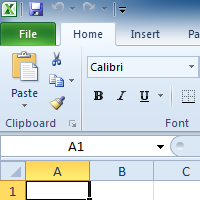
What is Excel.
Excel is a spreadsheet program that allows you to store, organize, and analyze information. I
The Ribbon
The Ribbon contains multiple tabs, each with several groups of commands. You can add your own tabs that contain your favorite commands.
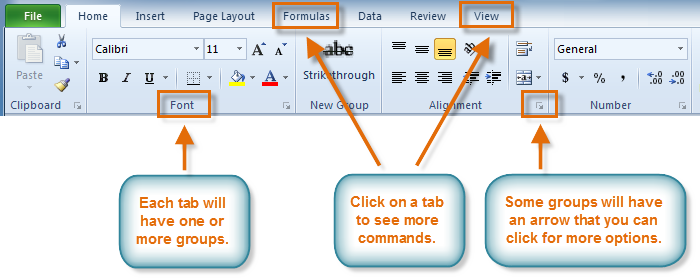
To customize the Ribbon:
- Right-click the Ribbon, then select Customize the Ribbon. A dialog box will appear.
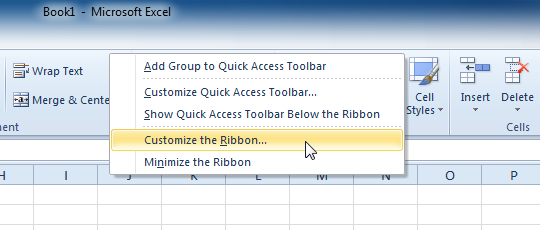
- Click New Tab. A new tab will be created with a new group inside it.
- Make sure the new group is selected.
- Select a command from the list on the left, then click Add. You can also drag commands directly into a group.
- When you are done adding commands, click OK.
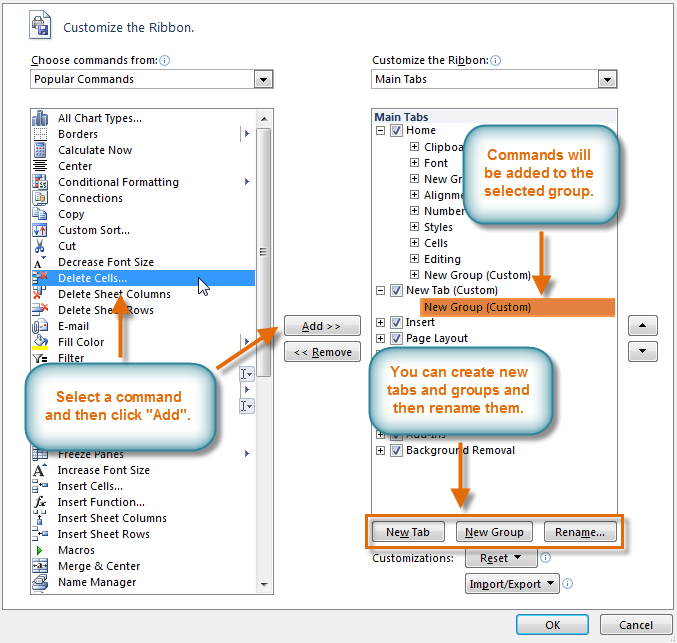
If you do not see the command you want, click the Choose commands drop-down box and select All Commands.

To minimize and maximize the Ribbon:
- Click the arrow in the upper-right corner of the Ribbon to minimize it.
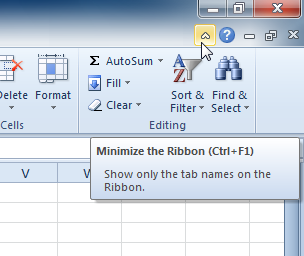
- To maximize the Ribbon, click the arrow again.
When the Ribbon is minimized, you can make it reappear by clicking a tab. However, the Ribbon will disappear again when you're not using it.
The Quick Access toolbar
The Quick Access toolbar, above the Ribbon, lets you access common commands no matter which tab you are on. By default, it shows the Save, Undo, and Repeat commands. You can add other commands to make it more convenient for you.
To add commands to the Quick Access toolbar:
- Click the drop-down arrow to the right of the Quick Access toolbar.
- Select the command you want to add from the drop-down menu. To choose from more commands, select More Commands.
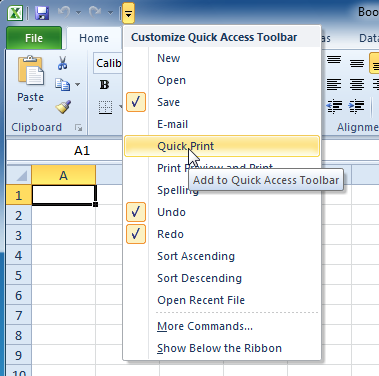
To get to Backstage view:
- On the Ribbon, click the File tab.

- Choose your desired option, or return to your workbook by clicking any tab on the Ribbon.

Creating and opening workbooks
Excel files are called workbooks. Each workbook holds one or more worksheets (also known as spreadsheets).
To create a new blank workbook:
- Click the File tab. This takes you to Backstage view.
- Select New.
- Select Blank workbook under Available Templates. It will be highlighted by default.
- Click Create. A new blank workbook appears in the Excel window.
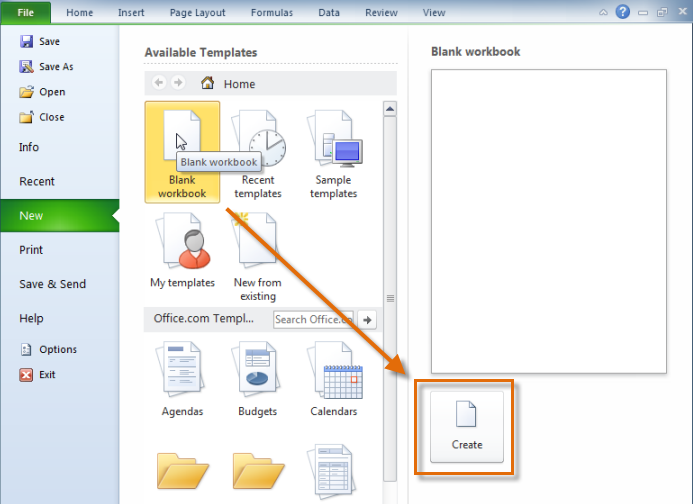
To open an existing workbook:
- Click the File tab. This takes you to Backstage view.
- Select Open. The Open dialog box appears.
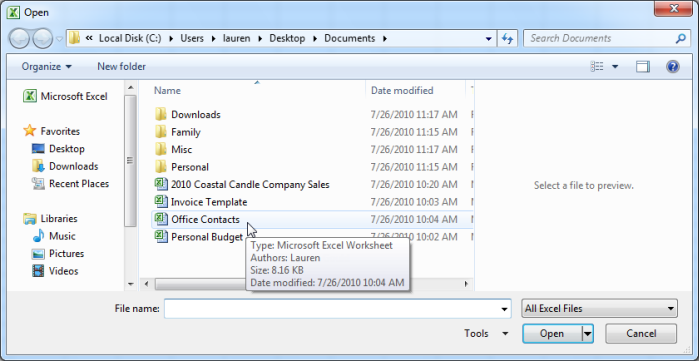
- Select your desired workbook, then click Open.

Challenge!
- Open Excel 2010 on your computer. A new blank workbook will appear on the screen.
- Try minimizing and maximizing the Ribbon.
- Click through all of the tabs, and notice how the Ribbon options change.
- Try switching page views.
- Add any commands you want to the Quick Access toolbar.
- Close Excel without saving the workbook.
No comments:
Post a Comment